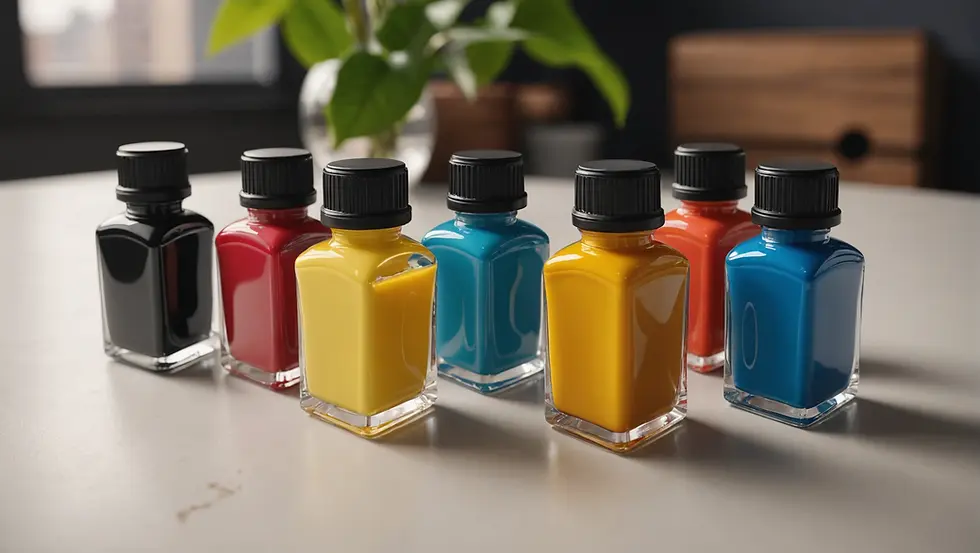The Journey of Paper: From Trees to Your Brand
- Szeyingg
- Sep 25
- 3 min read
Updated: Nov 13

From Trees to Pulp
It all starts in the forest. Logs are harvested, stripped, and chipped into small pieces. These chips are then transformed into pulp, which is the raw material of paper.
There are two main methods of pulping:
Mechanical pulping: Wood is ground down, leaving most of the natural components intact. It’s cheaper and faster, but the paper tends to yellow over time.
Chemical pulping: This method uses chemicals and heat to break down the wood, removing lignin (the part that causes yellowing). The fibres produced are stronger and longer-lasting, making the paper brighter and more durable.
This first step already influences what your paper will be used for. Will it be a soft, newsprint-style sheet? Or a high-quality, archival one?
Fun fact: Mechanical pulping is faster and cheaper, but the fibres are shorter, which makes paper more prone to yellowing. Chemical pulp creates stronger, whiter sheets that yellow slower over time.
The Alchemy of Paper Making
Once you’ve got pulp, water is added, and the slurry is spread thin across a moving screen. Think of it like sieving soup until only the fibres remain. This wet mat is then pressed, dried, and rolled out into giant sheets.
But the “magic” lies in what comes after:
Additives: Ingredients like clay, chalk, or calcium carbonate can make paper smoother, brighter, or whiter.
Coatings: Gloss or matte finishes change how ink sits on the page. Glossy stocks make colours pop, while uncoated stocks feel more natural and tactile.
Sizing: Chemicals can be added to control how absorbent the paper is. Without sizing, ink would bleed like water on tissue.
This explains why some brochures gleam with vibrant colours, while others feel raw, warm, and textured.

Size, Weight, and Finish
In the print world, three factors determine how your final product feels:
GSM (grams per square metre): The higher the number, the heavier and sturdier the paper.
Finish: Matte, glossy, uncoated, textured - each changes how colours look and how it feels to touch.
Opacity: This refers to how much light passes through the sheet, which is important for double-sided prints.
Choosing the right combination is what makes the difference between a flimsy flyer and a premium invitation.

Why It Matters for Brands
Think of paper as more than just a surface; it’s part of your brand’s identity. The same design printed on two different paper stocks can tell two completely different stories.
First impressions: A thick, textured business card communicates professionalism and reliability.
Brand alignment: Eco-friendly paper reinforces a sustainability-driven message.
Tactile experience: People don’t just see your brand; they feel it. That sensory connection can make your message stick.
Longevity: Archival-quality paper ensures that documents, keepsakes, or high-value prints last for decades without fading.
The Importance of Paper Quality
Understanding the quality of paper is crucial for any brand. High-quality paper can enhance the overall perception of your products and services. It reflects your attention to detail and commitment to excellence.
When choosing paper, consider the following aspects:
Durability: Will the paper withstand handling and environmental factors?
Print Quality: How well does the paper hold ink? Does it produce sharp, vibrant images?
Sustainability: Is the paper sourced from sustainable forests? This can resonate with eco-conscious consumers.
By selecting the right paper, you not only improve the aesthetics of your materials but also align with your brand values.
Final Thoughts
Paper isn’t just the “canvas” for your print; it’s part of the story. By choosing wisely, you’re not just making something look good; you’re shaping how people experience your brand.
So next time you pick up a brochure, notebook, or package, remember: there’s a whole secret life behind that sheet of paper. Understanding its journey can enhance your brand's narrative and create a lasting impression.
In conclusion, the journey of paper from trees to your brand is a fascinating process. By appreciating the intricacies of paper production, you can make informed choices that elevate your brand's identity.



Comments